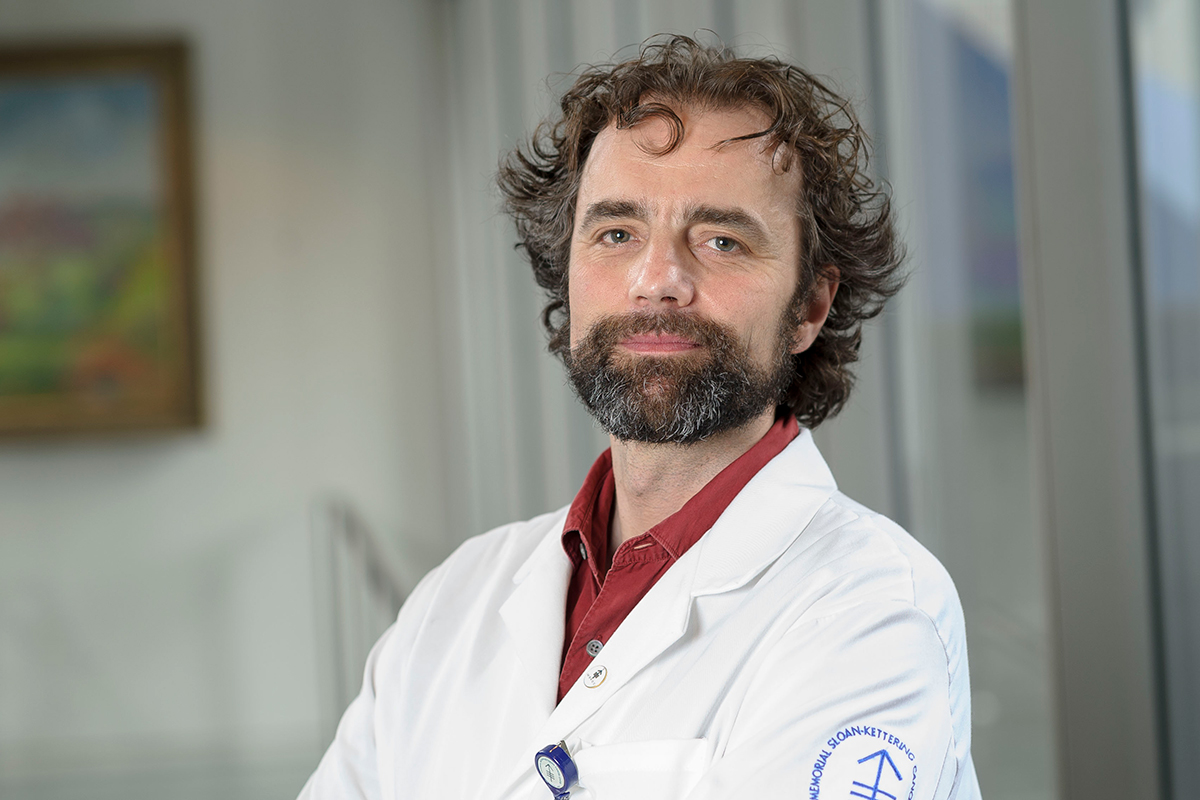
What is music therapy, and how can it help?
Music therapy is an evidence-based way to improve your health, enhance your well-being, and manage symptoms and side effects related to cancer and cancer treatment.
During music therapy, a trained therapist guides you through personalized activities, using the unique qualities of music to achieve specific health outcomes. These activities can be as simple as listening to music or as interactive as creating songs and making music together.
Whether you’re facing health challenges, undergoing cancer treatment, or caring for a loved one affected by cancer, music therapy can help with:
- Stress
- Anxiety
- Depression
- Fatigue
- Pain
- Sleep
- Memory, focus, and learning
- Brain health
- Coordination
- Creativity and mental flexibility
- Building resilience and adaptability
- Enhancing physical and mental performance
- Discovering joy and meaning in life
- Strengthening connections with loved ones
Why choose music therapy?
- Safe & effective: Music therapy is recommended in cancer care guidelines and supported by numerous scientific studies. It is a non-invasive treatment with minimal side effects.
- Non-drug option: Music therapy is a great fit for people who are already on a lot of medications and are concerned about taking more pills.
- For everyone: Beneficial for individuals of all ages facing various health challenges. No musical background or experience is required to participate or benefit from music therapy sessions.
- Personalized treatment: Each music therapy session is tailored to your unique needs and preferences, ensuring the activities resonate with you personally.
- Professional care: Provided by board-certified music therapists, ensuring you receive the highest standard of care.
Ready to improve your health through music therapy?
Contact us at 332-229-0801 or [email protected] to learn more, or speak to our music therapy team.
Read what other patients are saying about music therapy:
Listen to a wonderful song created by a patient with the help of our music therapy team:
If you are interested in learning more about music therapy and the benefits of engaging with music, check out these videos:
- How Does Music Affect Your Brain?
- How Music Can Heal Our Brain and Heart
- This Is Your Brain On Music - How Music Benefits The Brain (animated)
- How playing an instrument benefits your brain
- Music’s power over your brain, explained
Music Therapy Team

Karen Popkin, LCAT, MT-BC (she/her)
I am a Board-Certified Music Therapist and a Licensed Creative Arts Therapist working at MSK since 2006. My bachelor’s is in music education from Ohio University, and my master’s is from New York University in clinical music therapy. My post-graduate studies with The Academy of Neurologic Music Therapy and The Center for Music Therapy in End-of-Life Care have influenced my understanding of the role of music therapy in health care.
My approach is based in person-centered therapy, meaning that I see the relationship between client and therapist as one of co-discovery through music-based experiences to build self-care tools, shed light on inner processes and create a realm of play wherein a person is free to explore thoughts, feelings and ideas.
My musical tastes encompass a wide variety of genres, time-periods, instruments and sound textures, ranging anywhere from Western classical to indigenous multi-cultural influences, jazz, rock and beyond. I appreciate opportunities to discover new sounds and revisit old favorites. As long as it’s authentic, it can speak to me. In my work, I tend to use guitar, percussion and voice most often. Outside of work, I play euphonium in a community wind ensemble.

Alessandro Ricciarelli, LCAT, MT-BC (he/him)
I am a New York State-licensed and board-certified music therapist with 20 + years of experience. In my music therapy sessions, I play guitar, piano, and percussion, and I sing. I trained as a jazz guitarist at the Berklee College of Music in Boston, but I do love playing all kinds of music, Showtunes, Folk, Rock, Blues, Pop, and everything in between. In 2006 I joined the Integrative Medicine Service at Memorial Sloan Kettering Cancer Center as a staff music therapist. I am fluent in English, German, and Italian and conversational in French and Spanish.
In my therapeutic practice, I use interactive music making, song writing, meditation, and music lessons as well as conversation and empathic listening to help patients improve their mood, energy, and general outlook on life. In my sessions I focus on the patient’s needs completely and provide a safe space for creative self-expression and for processing life’s complexities, in and through music.

Camila Casaw, LCAT, MT-BC (she/her)
I am a Board-Certified Music Therapist and a Licensed Creative Art Therapist. I was born and raised in San Jose, Costa Rica. The work of music therapy has brought me to New York City where I have worked with Memorial Sloan Kettering since 2021. As a bilingual therapist I speak English and Spanish.
I received my undergraduate education in music therapy at Loyola University New Orleans, and my graduate degree in music therapy at New York University. I have worked with children and adults with diverse abilities in hospital settings, community programs, psychotherapy private practice, and end of life care.
As a music therapist I work from a culturally affirming and resource-oriented approach. I consider the patient’s needs and strengths as we discover how music can be a resource and how the therapeutic space can foster emotional support, creativity, and understanding of life’s felt experiences. I am a violinist by training, and I mostly lean on my guitar and voice for music therapy work. During my sessions, you can find me exploring the music that is meaningful to a patient, taking deep breaths held by the guitar, and honoring a patient’s voice and story that is shared within the session walls.

Sean McNally, LCAT, MT-BC (he/him)
I am a board-certified music therapist (MT-BC) and licensed creative arts therapist (LCAT) working at Memorial Sloan Kettering Cancer Center since 2022. I earned my Master of Science in music therapy from SUNY New Paltz. Prior to that, I earned my Bachelor of Fine Arts in film/video from School of Visual Arts. My clinical experience during the master’s program included work in childhood development, community mental healthcare, older adult population settings, as well as veterans’ populations across the lifespan including inpatient psychiatric care, homelessness, and end of life.
My approach is person-centered, music-centered, and resource-oriented. I follow the client’s lead with trust in the process knowing therapeutic growth happens in music experiences while maintaining a focus on clients acquiring new music-related tools or strategies in sessions to utilize in their lives outside sessions. I believe that music itself is a powerful tool that can be utilized towards a variety of goals including but not limited to anxiety reduction, emotional processing, self-expression, as well as personal growth. I am most proficient in guitar and voice drawing from genres such as rock, pop, soul, R&B, country, folk, and hip-hop, among others.